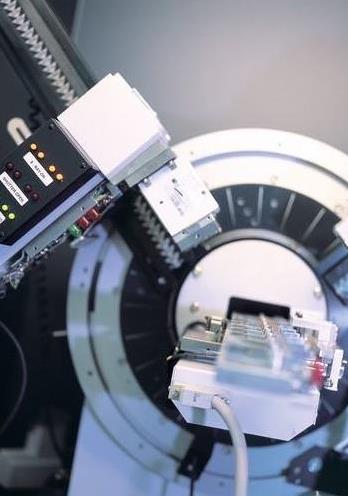78 picometre
resolution with our investment in state of the art transition electron microscopes (TEMs) so we can examine our materials down to the subatomic scale
0.1 weight %
sensitivity of elemental compositional mapping with our new electron probe micro analysis (EPMA) instrument so we can see where metals are distributed on our battery and catalyst materials
Knowledge and understanding are the foundations of everything we do. To produce efficient, robust catalysts, develop advanced materials and help customers solve problems, we need to understand how the structure and composition of our products relates to their performance and activity, right down to the atomic level. We do this with a range of advanced characterisation techniques delivered by in-house experts, which underpin our research, development and customer support activities.
What is advanced characterisation?
Using advanced characterisation techniques, we can look at materials all the way down to the atomic scale during their operation, so we can provide our customers with detailed insights into why our products behave as they do under differing chemical and thermal conditions. This gives our customers a good understanding of how these products will be affected by their production processes and allows us to identify where changes must be made before the products are put to use for our customers.
What is modelling?
Atomic scale modelling allows us to probe physical properties, study chemical reactions to suggest new compositions or structural features that could influence reactions, and design novel materials with specific properties and functions. Close collaboration between experimental scientists and modellers accelerates the material discovery process, allowing iterative refinements of models and ultimately the synthesis of candidate materials.

Making every atom count
Our teams of dedicated characterisation experts in our laboratories undertake activities ranging from bulk analysis at our manufacturing facilities to advanced materials characterisation at our R&D sites, making sure every atom is effective, improving longevity and performance. We can also help customers identify contaminants that may have entered their production processes and give them the data they need for gaining regulatory approval for complex pharmaceutical materials.
The best clarity on materials
Alongside our extensive in-house resources, we have also invested at the Harwell Science Complex, which includes synchrotrons at Diamond Light Source which accelerate electrons to produce very intense light, a neutron spectrometer at ISIS and the UK Central Laser facility, giving us access to world class capabilities for atomic scale imaging and structural insight. Our teams can now investigate materials in unprecedented detail across biological and physical sciences at a range of scales. And many of our collaborations with top universities are focussed on novel characterisation and modelling techniques.
Using such techniques provides us with information that allows us to supply better performing, longer lasting, more cost-effective solutions, ensuring our customers can have confidence in our catalysts and materials throughout their whole lifecycle.

